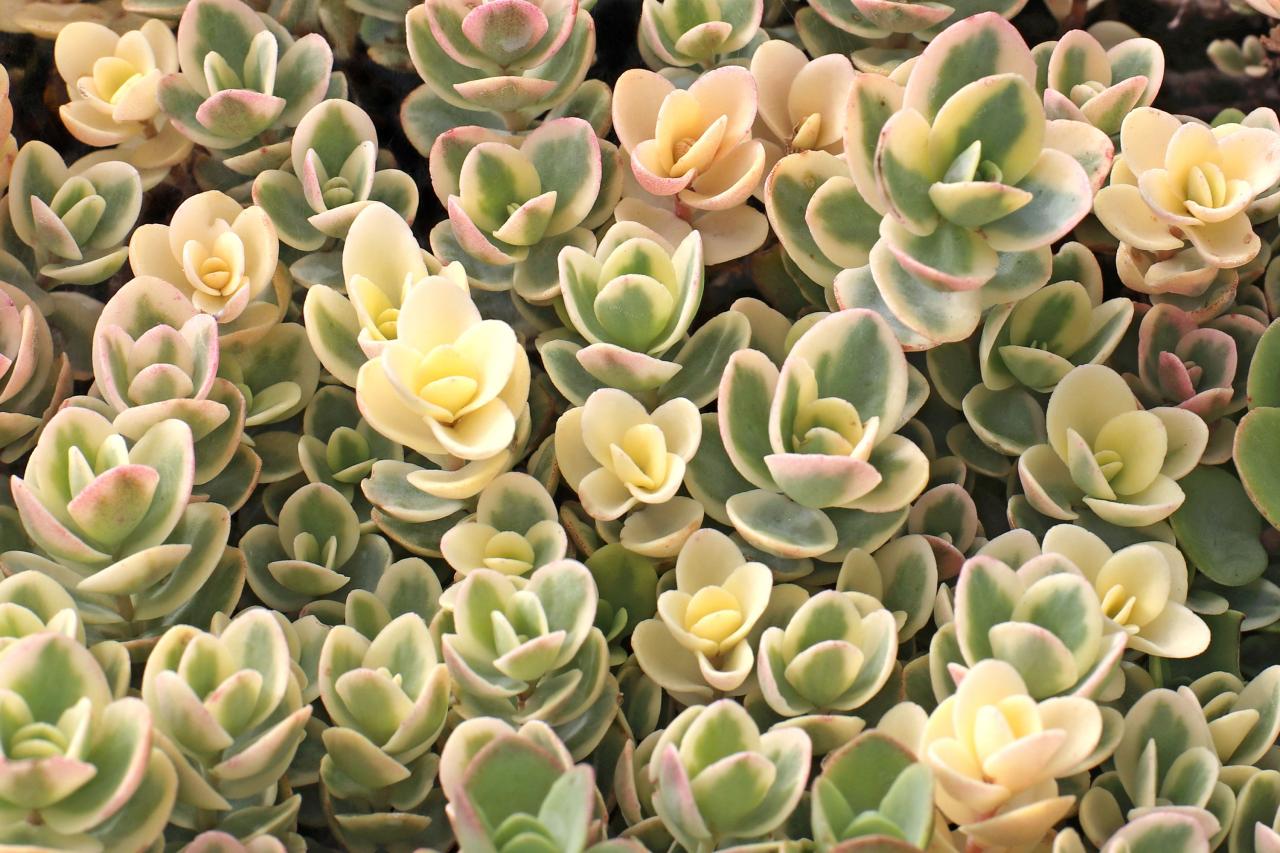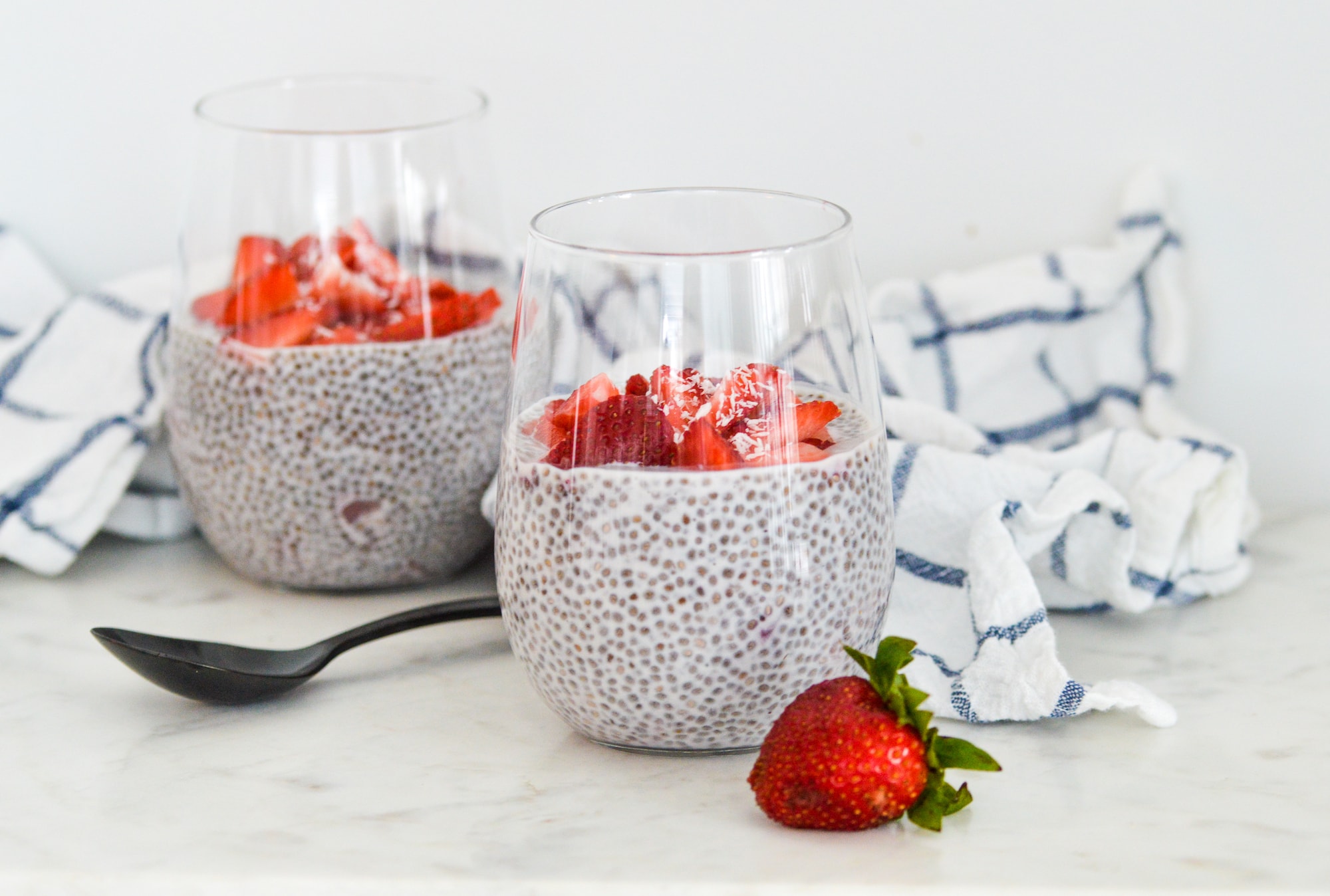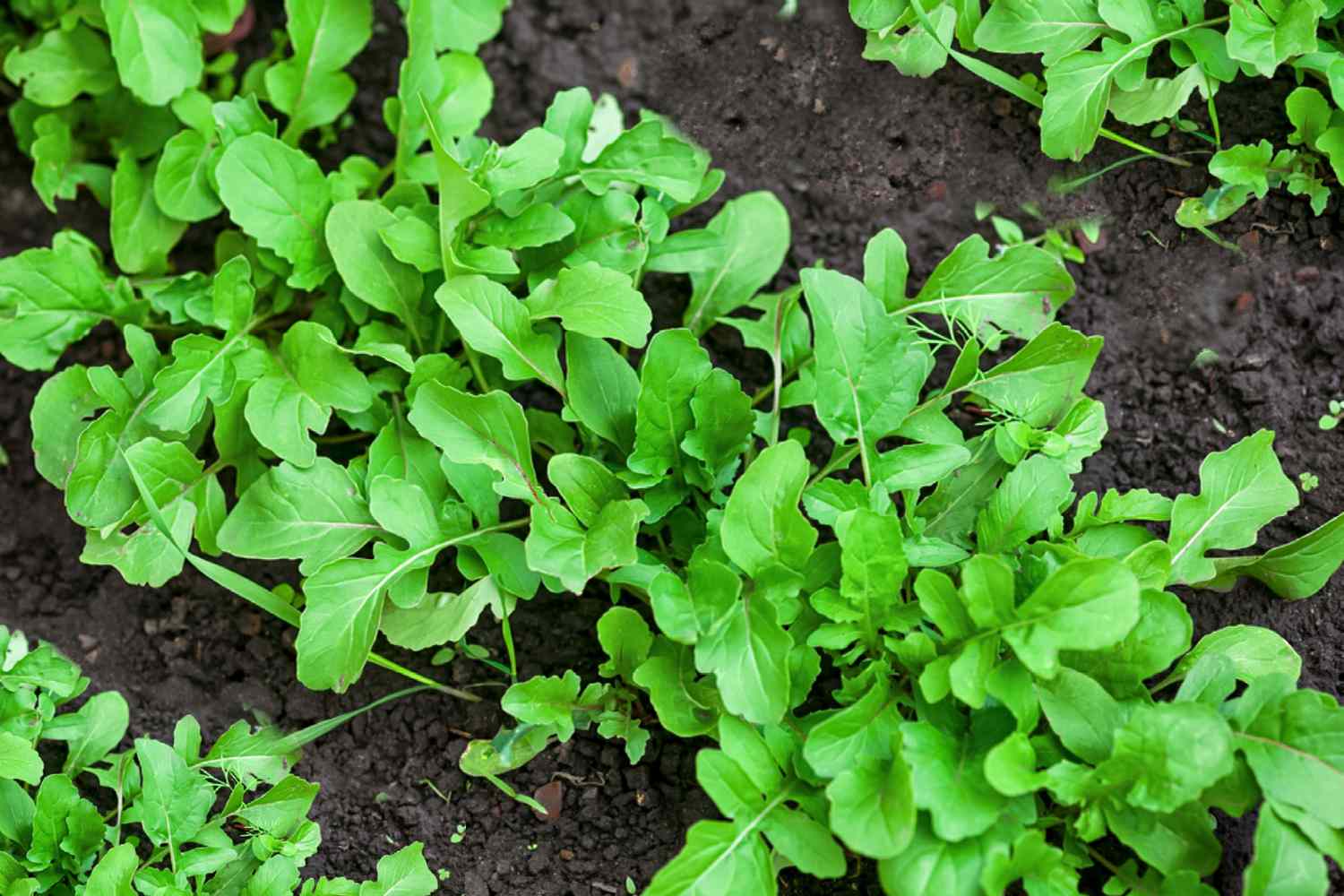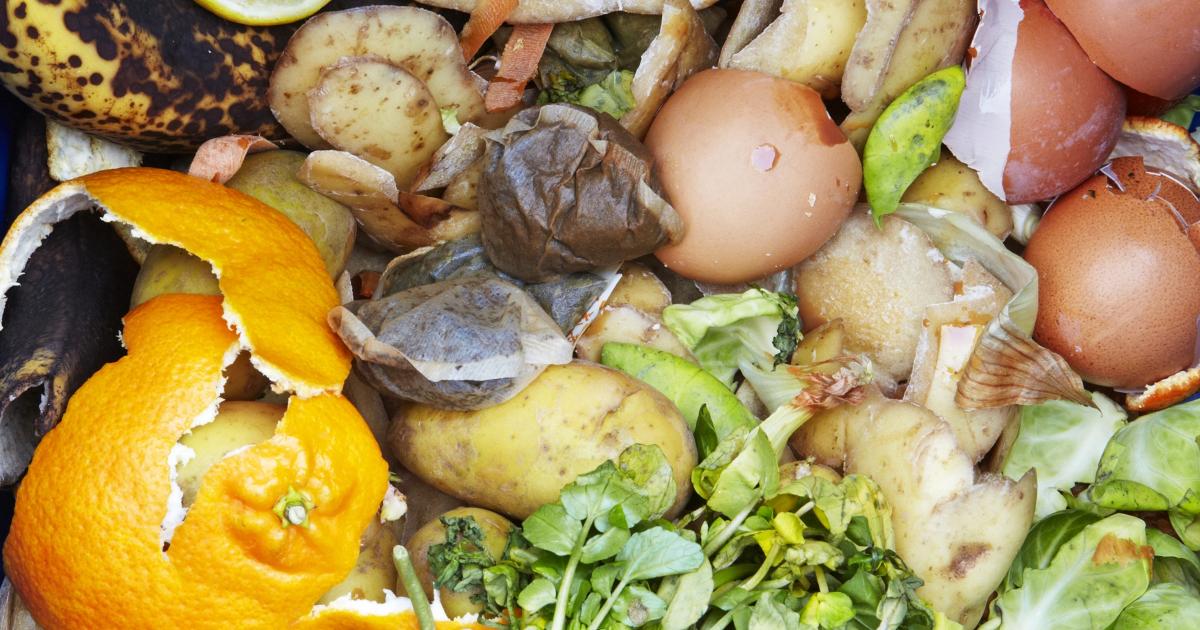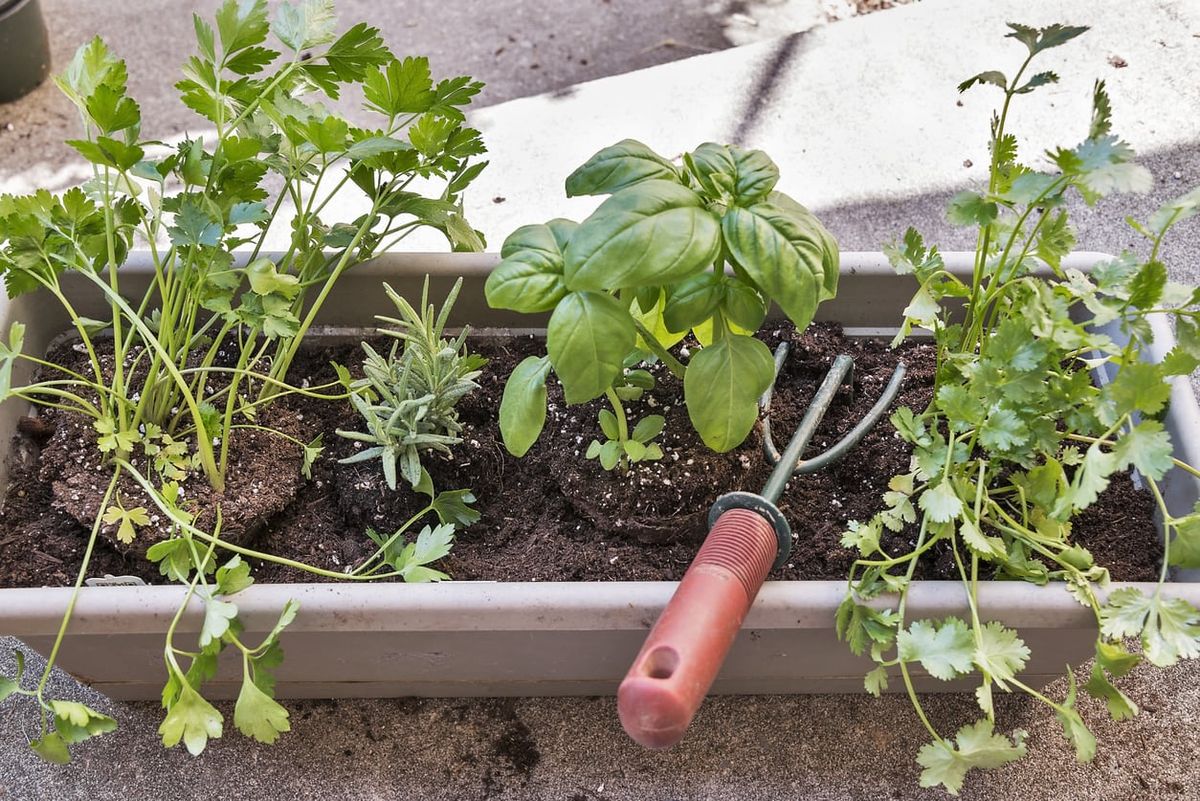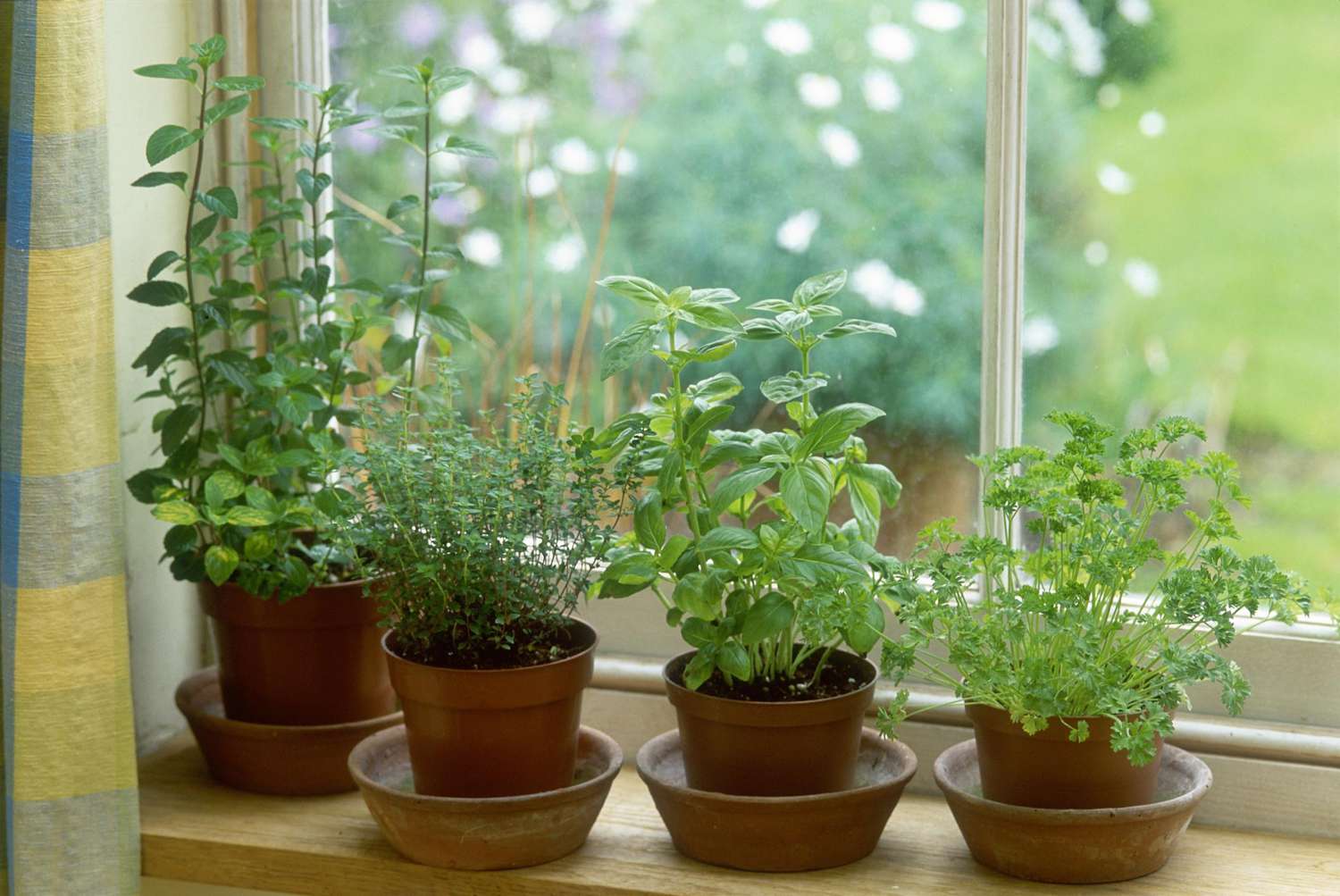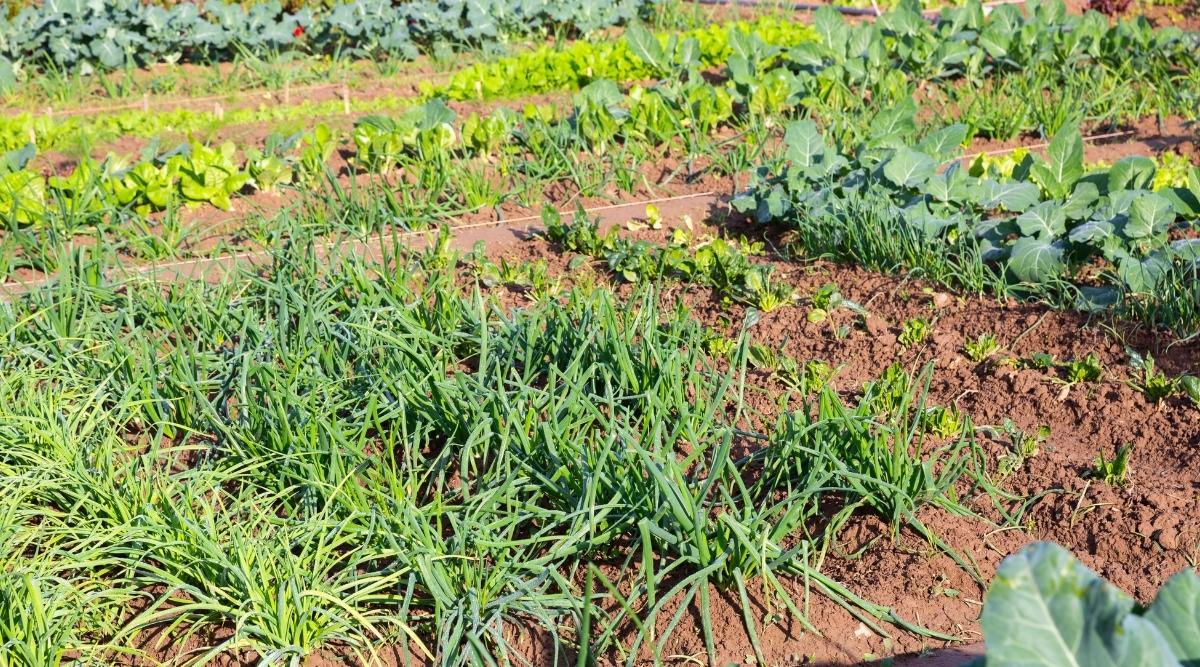Home>Gardening Techniques>What Can I Grow In A Greenhouse In Winter


Gardening Techniques
What Can I Grow In A Greenhouse In Winter
Modified: January 22, 2024
Discover the possibilities of seasonal gardening in winter with a greenhouse. Find out which plants thrive in colder months and keep your garden vibrant all year round.
(Many of the links in this article redirect to a specific reviewed product. Your purchase of these products through affiliate links helps to generate commission for Chicagolandgardening.com, at no extra cost. Learn more)
Table of Contents
Introduction
Welcome to the exciting world of winter greenhouse gardening! If you’re a gardening enthusiast who loves to nurture plants year-round, then a greenhouse can be a game-changer for you. While it’s easy to think of gardening as a spring and summer activity, a greenhouse provides the opportunity to extend your growing season and enjoy fresh produce and beautiful plants even in the colder months.
The concept of greenhouse gardening has been around for centuries, and it continues to be a popular choice for both hobbyists and commercial growers. A greenhouse provides a controlled environment that protects plants from harsh weather conditions, regulates temperature and humidity, and offers optimal growing conditions. With the advancement of technology, modern greenhouses provide even more options for climate control, allowing you to create the perfect growing conditions for a wide variety of plants.
There are several benefits to growing in a greenhouse during winter. First and foremost, it allows you to continue pursuing your gardening passion regardless of the weather outside. It offers protection from frost, snow, and extreme temperature fluctuations, ensuring that your plants thrive. It also provides a sheltered space where you can experiment with different plant varieties, techniques, and growing methods.
Another advantage of winter greenhouse gardening is the ability to grow a wider range of plants. While outdoor gardening may be limited to cold-hardy crops during the winter months, a greenhouse allows you to cultivate more tender and delicate plants that would otherwise struggle in colder climates. Whether you’re interested in growing fresh vegetables, aromatic herbs, vibrant flowers, or even fruit-bearing plants, a greenhouse provides the ideal environment to achieve your gardening goals.
In this comprehensive guide, we will explore the world of winter greenhouse gardening and discuss the various crops that thrive in a controlled environment. We will cover everything from leafy greens and root vegetables to herbs, microgreens, and even fruit-bearing plants. So, whether you’ve just started your greenhouse journey or have years of experience, this article will provide you with valuable insights and inspire you to explore the possibilities of growing in a greenhouse during winter.
Benefits of Growing in a Greenhouse in Winter
Growing plants in a greenhouse during winter offers numerous advantages that make winter gardening a rewarding and enjoyable experience. Let’s explore some of the key benefits:
1. Extended Growing Season: While outdoor gardening may be limited to the warmer months, a greenhouse allows you to extend your growing season. By creating a controlled environment with sufficient heat and light, you can continue to grow a wide variety of plants throughout the winter months.
2. Protection from Harsh Weather: With a greenhouse, you can protect your plants from frost, snow, wind, and other extreme weather conditions that can wreak havoc on your garden. This protection ensures that your plants remain healthy and thrive, even during the coldest months of the year.
3. Optimal Climate Control: Greenhouses provide the ability to regulate temperature, humidity, and ventilation, allowing you to create the perfect growing conditions for your plants. You can adjust these factors based on the specific requirements of each plant, ensuring they receive the ideal environment for growth.
4. Enhanced Pest and Disease Control: By growing plants in a confined space, you can minimize the risks of pest infestations and diseases. Additionally, the controlled environment of a greenhouse makes it easier to implement preventive measures and maintain a healthier growing environment for your plants.
5. Increased Yield and Crop Diversity: Winter greenhouse gardening opens up a world of possibilities when it comes to the crops you can grow. With the right selection of plants, you can enjoy fresh vegetables, herbs, and even fruits year-round. This diversity in crops not only offers an array of flavors and nutritional benefits but also adds visual beauty to your greenhouse.
6. Cost-effectiveness: Growing your own produce in a greenhouse can be cost-effective in the long run. With careful planning and proper maintenance, you can significantly reduce your grocery bills and enjoy the satisfaction of harvesting your own organic and fresh produce.
7. Stress Relief and Therapeutic Benefits: Spending time in a greenhouse, tending to your plants and witnessing their growth, can have a calming and therapeutic effect. Engaging with nature and nurturing living organisms can provide a sense of fulfillment and help alleviate stress and anxiety.
These are just a few of the many benefits of growing in a greenhouse during winter. Whether you’re a seasoned gardener or just starting out, a greenhouse offers an exciting and rewarding opportunity to embrace year-round gardening and explore the wonders of nature even in the coldest months.
Climate Control in a Greenhouse
One of the key factors that make greenhouse gardening so successful is the ability to have precise control over the climate within the structure. Proper climate control ensures that plants receive the ideal conditions for growth, regardless of the outdoor weather. Here are some essential aspects of climate control in a greenhouse:
1. Temperature: Maintaining the right temperature is crucial for the health and growth of plants. Most plants thrive within a specific temperature range, and a greenhouse allows you to regulate the temperature accordingly. Heating systems, such as thermostatically controlled heaters or geothermal heating, can be used to keep the temperature within the desired range during colder months.
2. Ventilation: Adequate ventilation is essential to prevent excessive heat buildup, control humidity levels, and ensure proper air circulation within the greenhouse. Ventilation can be achieved through various methods, such as windows, vents, exhaust fans, and ridge vents. It helps to regulate temperature, prevent the buildup of moisture, and reduce the risk of diseases caused by stagnant air.
3. Humidity: The level of humidity in the greenhouse plays a vital role in plant growth. Many plants prefer specific humidity levels, and a greenhouse allows you to adjust humidity through techniques such as misting, evaporative cooling, and using humidity trays. Monitoring and maintaining proper humidity levels help prevent issues such as leaf wilting or excessive moisture-related diseases.
4. Light: Light is an essential element for photosynthesis, the process by which plants convert sunlight into energy. While natural sunlight is ideal, supplemental lighting can be used during the shorter winter days or when natural light is limited. LED grow lights and fluorescent bulbs are popular options for providing the necessary light spectrum for plant growth.
5. Watering and Irrigation: Proper watering and irrigation practices are crucial for plant health. Greenhouses often require automated or manual irrigation systems that distribute water directly to the root zone. It is important to ensure that plants receive the right amount of water without overwatering, which can lead to root rot and other issues.
6. CO2 Levels: Carbon dioxide (CO2) is essential for photosynthesis, and maintaining adequate CO2 levels in the greenhouse can significantly enhance plant growth and productivity. CO2 supplementation can be achieved through natural methods such as venting and through controlled release devices or CO2 generators.
By carefully managing these aspects of climate control in your greenhouse, you can create the optimal growing conditions for your plants. Regular monitoring and adjustments based on the specific needs of each plant will help ensure their health, vigor, and productivity throughout the winter season.
Selecting the Right Crops for Winter Greenhouse Gardening
Choosing the right crops for winter greenhouse gardening is essential to ensure a successful and bountiful harvest. While some plants thrive in the cooler temperatures and limited sunlight of winter, others require more warmth and light to grow. Here are some key factors to consider when selecting crops for your winter greenhouse:
1. Temperature Tolerance: Different plants have varying temperature requirements. Some crops, like leafy greens and root vegetables, can tolerate colder temperatures and even frost. These cold-hardy crops are excellent choices for winter greenhouse gardening. Other plants, such as tropical fruits or heat-loving herbs, may require additional heating or temperature regulation to thrive in the winter months.
2. Daylight Requirements: The amount of daylight plants receive directly affects their growth and productivity. Some crops, like microgreens, can thrive with lower light levels, while others, such as fruit-bearing plants, require more hours of direct sunlight. Consider the winter daylight hours in your region and choose crops that are suited to the available light conditions or supplement with artificial lighting.
3. Growth Cycle: Understanding the growth cycle of crops is crucial for planning and timing your winter greenhouse garden. Some plants, like lettuce and spinach, have shorter growing cycles and can be harvested relatively quickly. Others, like tomatoes or peppers, have longer growth periods and may require starting seeds or transplants earlier in the season to ensure a successful harvest.
4. Space and Size: Consider the available space in your greenhouse when selecting crops. Some plants, like compact herbs or salad greens, can be grown in containers or in vertical systems to maximize space efficiency. Others, such as vining plants or taller fruit-bearing varieties, may require trellising or additional vertical growing systems to accommodate their growth habits.
5. Personal Preferences and Needs: Take into account your own preferences, dietary needs, and gardening goals when choosing crops for your winter greenhouse. Do you want to grow a variety of fresh vegetables for your daily meals? Are you interested in experimenting with different herbs and exotic plants? Consider your culinary interests and gardening aspirations to select crops that align with your desires.
6. Succession Planting: To maximize your winter greenhouse garden’s productivity, consider succession planting. This involves staggering plantings of the same crop at specific intervals, ensuring a continuous harvest throughout the season. Succession planting allows you to make the most of limited space and ensures a constant supply of fresh produce.
There is a wide range of crops suitable for winter greenhouse gardening. Some popular choices include leafy greens like kale, Swiss chard, and arugula; root vegetables like carrots, beets, and radishes; herbs like parsley, cilantro, and rosemary; microgreens and sprouts; flowers like winter pansies and snapdragons; and fruit-bearing plants like strawberries or citrus varieties suited for greenhouse conditions.
By considering temperature requirements, daylight needs, growth cycles, available space, personal preferences, and succession planting, you can select a diverse array of crops for your winter greenhouse garden. Experimenting with different varieties and expanding your plant selection will not only provide you with a delicious harvest but also add excitement and discovery to your winter gardening journey.
Leafy Greens
Leafy greens are excellent choices for winter greenhouse gardening, as many varieties thrive in cooler temperatures and have shorter growing cycles. These nutrient-packed greens not only provide a fresh and healthy addition to your meals but also add beauty to your greenhouse. Here are some popular leafy greens that you can grow in your winter greenhouse:
1. Lettuce: Lettuce is a versatile and fast-growing green that is perfect for winter greenhouse gardening. Varieties like butterhead, romaine, and loose-leaf lettuce can be harvested within weeks of planting. You can enjoy crisp salads or add fresh, tender leaves to sandwiches and wraps throughout the season.
2. Spinach: Spinach is a cold-hardy green that thrives in lower light conditions. It is packed with nutritional benefits, including vitamins A, C, and K, as well as iron and antioxidants. Harvesting can begin as soon as the leaves are large enough to use and continue throughout the winter months.
3. Swiss Chard: With its vibrant-colored stems and glossy, dark leaves, Swiss chard is a visually appealing addition to any greenhouse. This cold-hardy green provides a nutritious mix of vitamins and minerals. Harvest the outer leaves when they reach a usable size to promote continuous growth and extended harvest.
4. Kale: Kale is a superfood that thrives in cooler temperatures, making it an excellent choice for winter greenhouse gardening. Its curly or smooth leaves are rich in vitamins A, C, and K, as well as antioxidants. Harvest the outer leaves regularly to encourage new growth, and use them in salads, stir-fries, or smoothies.
5. Arugula: Arugula adds a peppery and distinctive flavor to salads and other dishes. This fast-growing green can be harvested when the leaves are young and tender. It prefers cooler temperatures and can tolerate some frost, making it an ideal choice for winter greenhouse gardening.
6. Mustard Greens: Mustard greens come in various varieties, each with its unique flavor profile. From spicy to mild, these greens can be harvested throughout the winter months. They are an excellent choice for adding a kick to salads or using in stir-fries and sautés.
7. Asian Greens: Asian greens like bok choy, tatsoi, and mizuna are quick-growing, cold-hardy greens that add a distinct flavor to dishes. They can be harvested when young and tender, making them an ideal choice for continuous harvesting in a winter greenhouse.
8. Mesclun Mix: Mesclun mix typically includes a combination of various lettuce greens, as well as other tender and flavorful greens. Harvesting can begin once the leaves are of a usable size. This mix adds a delightful array of colors, textures, and flavors to salads.
Leafy greens are relatively easy to grow, and with proper care, you can enjoy a continuous harvest throughout the winter season. Remember to provide them with sufficient light and maintain consistent moisture levels in the soil. By growing your own leafy greens in a winter greenhouse, you can enjoy the freshest and most flavorful produce right at your fingertips.
Root Vegetables
Root vegetables are a versatile and nutritious group of plants that are well-suited for winter greenhouse gardening. These underground wonders provide a range of flavors and textures, making them a popular choice for both culinary enthusiasts and health-conscious individuals. Here are some root vegetables that you can grow in your winter greenhouse:
1. Carrots: Carrots are a classic root vegetable known for their vibrant colors and delicious, sweet flavor. They are relatively easy to grow and can be harvested when they reach the desired size. With the right conditions, you can enjoy fresh, homegrown carrots throughout the winter months.
2. Beets: Beets come in a variety of colors and add a burst of sweetness to your dishes. These nutrient-dense root vegetables can be harvested when they are young and tender or allowed to grow larger for a more robust flavor. The greens of beets are also edible and make a wonderful addition to salads.
3. Radishes: Radishes are quick-growing root vegetables that can add a zesty crunch to your meals. They come in a range of colors, shapes, and flavors. Radishes are ideal for winter greenhouse gardening as they prefer cooler temperatures and can be harvested within a few weeks of planting.
4. Turnips: Turnips are versatile root vegetables that can be enjoyed both raw and cooked. They have a slightly sweet, earthy flavor and are often used in stews, soups, and roasted vegetable medleys. Turnips can tolerate cooler temperatures and provide a bountiful harvest throughout the winter season.
5. Rutabaga: Rutabagas are a cross between turnips and cabbages, offering a unique flavor and texture. They are excellent roasted, mashed, or mixed in soups and stews. Rutabagas can withstand colder temperatures, making them a suitable choice for winter greenhouse gardening.
6. Parsnips: Parsnips have a sweet and nutty flavor that intensifies when exposed to cold temperatures. They are often roasted, mashed, or used in hearty winter dishes. Parsnips can be left in the ground until ready to use, allowing their flavors to develop further.
7. Daikon Radish: Daikon radish is a versatile root vegetable commonly used in Asian cuisine. It has a crisp texture and a slightly spicy flavor. Daikon radishes are ideal for winter greenhouse gardening, as they prefer cooler temperatures and can be harvested when they reach the desired size.
Cultivating root vegetables in a winter greenhouse provides you with a continuous supply of fresh and flavorful produce throughout the colder months. Ensure they have well-draining soil, consistent moisture levels, and adequate light. By growing your own root vegetables, you can relish the satisfaction of harvesting these delicious and nutritious crops straight from your greenhouse to your plate.
Herbs
Growing herbs in a winter greenhouse is a delightful way to add fresh flavors, aromas, and visual appeal to your culinary creations. Whether you enjoy cooking with herbs or simply appreciate their beauty and fragrance, a greenhouse provides an ideal environment for cultivating a variety of herbs throughout the year. Here are some herbs that thrive in a winter greenhouse :
1. Basil: Basil is a popular herb known for its distinctive aroma and flavor. Its vibrant green leaves can elevate the taste of salads, pasta dishes, and sauces. With adequate warmth and light, basil can thrive in a winter greenhouse, providing you with a constant supply of fresh leaves.
2. Rosemary: Rosemary is a hardy herb with a robust flavor and aroma. It is a staple in Mediterranean cuisine and pairs well with roasted meats, vegetables, and potatoes. Rosemary prefers a sunny spot in the greenhouse and can tolerate cooler temperatures, making it an excellent herb to grow during winter.
3. Thyme: Thyme is a versatile herb that adds a savory, earthy flavor to a wide range of dishes. Its small leaves are packed with aromatic oils that enhance the taste of soups, stews, marinades, and roasted vegetables. Thyme is a low-maintenance herb that thrives in a winter greenhouse, even in lower light conditions.
4. Parsley: Parsley is a versatile herb that can be used as a garnish or incorporated into dishes for added freshness and flavor. It comes in two main varieties: curly leaf and flat-leaf (Italian) parsley. Parsley performs well in a winter greenhouse, providing you with a continuous supply of vibrant green leaves throughout the season.
5. Mint: Mint is a fragrant herb that adds a refreshing touch to beverages, desserts, and savory dishes. It thrives in well-drained soil and prefers a slightly cooler environment. A winter greenhouse offers the ideal conditions to cultivate various mint varieties, such as spearmint, peppermint, and chocolate mint.
6. Chives: Chives are a versatile herb with a mild onion flavor. Their slender, hollow leaves are commonly used as a garnish or chopped and added to salads, dips, and creamy sauces. Chives can tolerate cooler temperatures, making them suitable for winter greenhouse gardening.
7. Oregano: Oregano is a flavorful herb commonly associated with Italian and Mediterranean cuisines. Its robust flavor complements tomato-based dishes, soups, and roasted vegetables. Oregano thrives in a sunny and well-ventilated winter greenhouse, making it a reliable herb to grow during colder months.
8. Cilantro: Cilantro, also known as coriander, offers a fresh, citrusy flavor that is popular in Mexican, Asian, and Middle Eastern cuisines. It is commonly used in salsas, guacamole, curries, and salads. Cilantro can be grown in a winter greenhouse, ensuring a constant supply of the herb’s pungent leaves.
Growing herbs in a winter greenhouse not only provides you with a convenient and accessible source of fresh flavors but also allows you to enjoy the aesthetic beauty and aromas of these plants. Experiment with different varieties to explore a world of diverse tastes, scents, and culinary possibilities right at your fingertips.
Microgreens and Sprouts
If you’re looking for a quick-growing and nutrient-packed addition to your winter greenhouse, microgreens and sprouts are the perfect choice. These tiny, tender plants are harvested at an early stage of growth, providing an explosion of flavors, textures, and nutritional benefits. Here’s why microgreens and sprouts are a fantastic option for winter greenhouse gardening:
1. Quick Growth: Microgreens and sprouts have a rapid growth cycle, allowing you to enjoy fresh harvests in a matter of weeks. Some varieties can be ready for harvest within 7 to 14 days, making them a fantastic option for those who crave quick results and near-instant gratification.
2. Concentrated Nutrients: Despite their small size, microgreens and sprouts are packed with an abundance of vitamins, minerals, and antioxidants. In fact, studies have shown that certain microgreens can contain higher levels of nutrients compared to their mature counterparts. Adding these tiny powerhouses to your meals can boost their nutritional value significantly.
3. Versatility in Culinary Use: Microgreens and sprouts offer a wide array of flavors, ranging from mild and nutty to peppery and tangy. They can be used as garnishes, added to salads, sandwiches, and wraps, or incorporated into stir-fries and smoothies. Their delicate textures and vibrant colors elevate the visual appeal of any dish.
4. Space-Efficient Cultivation: Growing microgreens and sprouts requires minimal space, making them ideal for both small-scale and larger greenhouse setups. They can be cultivated in shallow trays or containers, or even using specialized equipment designed for sprouting. This space efficiency allows you to maximize your greenhouse’s potential and cultivate a diverse range of crops.
5. Continuous Harvesting: With a steady rotation system, you can have a continuous supply of microgreens and sprouts throughout the winter season. By sowing new seeds every few days or weeks, you can ensure a regular harvest schedule and enjoy a constant supply of these flavorful and nutritious greens.
6. Year-Round Availability: Thanks to the controlled environment of a winter greenhouse, you can enjoy fresh microgreens and sprouts year-round, regardless of the external weather conditions. The ability to grow these delicate greens in any season allows you to incorporate their goodness into your meals consistently.
Popular microgreens and sprouts varieties include broccoli, kale, radish, sunflower, pea shoots, and alfalfa sprouts. However, there are numerous other options available, each offering its unique flavors and textures to suit your preferences.
When growing microgreens and sprouts, ensure proper moisture levels, sufficient light, and optimal temperatures. There are various methods available for cultivating them, including soil-based or hydroponic systems, as well as tray or jar sprouting techniques.
By incorporating microgreens and sprouts into your winter greenhouse, you can enjoy the wonders of these tiny but mighty greens, adding both visual appeal and nutritional value to your meals all year round.
Flowers and Ornamental Plants
While winter may be associated with a dormant garden, a winter greenhouse provides the opportunity to cultivate a stunning array of flowers and ornamental plants even during the coldest months. Adding these beautiful elements to your greenhouse not only enhances its visual appeal but also uplifts your spirits during the winter season. Here are some flowers and ornamental plants that flourish in a winter greenhouse:
1. Winter Pansies: Winter pansies are adorable, cold-tolerant flowers that come in a variety of vibrant colors. They can withstand chilly temperatures and bloom profusely, bringing a pop of color to your greenhouse during the winter months. Winter pansies are excellent for bedding displays, containers, or hanging baskets.
2. Snapdragons: Snapdragons add vertical interest to your greenhouse with their tall spikes of flowers. They are available in an array of colors and bloom throughout the winter season, providing a delightful display. These hardy plants can tolerate colder temperatures, making them perfect for winter greenhouse gardening.
3. Cyclamen: Cyclamen are compact plants with beautifully patterned leaves and delicate, upswept blossoms. They thrive in cool conditions and add a touch of elegance and charm to any greenhouse setting. Cyclamen flowers come in shades of pink, white, and red, and their blooms last for several weeks.
4. Primroses: Primroses are beloved early bloomers that can brighten up your winter greenhouse. These cheerful flowers come in various colors, including shades of yellow, pink, purple, and white. Primroses prefer cool temperatures and provide a delightful burst of color and fragrance.
5. Camellias: Camellias are evergreen shrubs that produce large, showy flowers with striking colors and glossy foliage. They prefer cool temperatures and can thrive in the controlled environment of a winter greenhouse. With proper care, camellias can reward you with stunning blooms throughout the winter months.
6. Ornamental Cabbages and Kale: Ornamental cabbages and kale are captivating plants that offer a unique touch to your winter greenhouse. Their vibrant and ruffled leaves create beautiful rosettes, providing visual interest and adding texture and color to your greenhouse display. These plants can tolerate cooler temperatures and are ideal for containers or flower beds.
7. Hellebores: Hellebores, also known as Lenten roses, are elegant perennials that bloom during the winter months. They display exquisite, nodding flowers in shades of white, pink, green, and purple. Hellebores are shade-loving plants that thrive in cooler temperatures, making them an excellent choice for a winter greenhouse.
8. Jasmine: Jasmine is a fragrant vine that can add a touch of exoticism to your greenhouse during the winter season. Certain jasmine varieties, such as winter jasmine, bloom in colder months, providing clusters of delicate, sweet-scented flowers. Their vibrant blooms and pleasant fragrance create a captivating atmosphere.
With proper care in terms of light, temperature, and watering, these flowers and ornamental plants can thrive and bring life to your winter greenhouse. Enjoy the beauty and fragrance they provide, and let them brighten up your space during the quiet months of winter.
Fruit-Bearing Plants
Imagine plucking fresh, delicious fruits from your own winter greenhouse! Growing fruit-bearing plants in a controlled environment offers a unique opportunity to enjoy homegrown produce all year round. While some fruiting plants may require more attention and specific growing conditions, the rewards are well worth the effort. Here are some fruit-bearing plants that you can successfully cultivate in a winter greenhouse:
1. Strawberries: Strawberries are a favorite among gardeners due to their sweet taste and versatility in culinary use. Select everbearing or day-neutral varieties that are well-suited to greenhouse conditions. Provide them with ample sunlight and consistent watering to enjoy a continuous harvest of juicy berries.
2. Tomatoes: Tomatoes are perhaps the most popular fruiting plant for greenhouse cultivation. With the ideal temperature and lighting conditions, you can grow a wide range of tomato varieties, from cherry to beefsteak. Choose determinate or dwarf varieties for more manageable growth, and ensure good airflow and proper trellising for optimal fruit production.
3. Citrus Trees: Dwarf citrus trees, such as lemons, limes, and oranges, are well-suited for greenhouse cultivation. These evergreen plants require a warm and well-lit environment. With careful care, you can enjoy the fragrant blossoms and harvest fresh citrus fruits throughout the winter season.
4. Fig Trees: Fig trees are an excellent choice for greenhouse gardening, especially if you live in cooler regions. These fruit trees enjoy a long growing season and prefer consistent temperatures. With a little pruning and proper care, you can harvest delicious figs from your greenhouse, even in winter.
5. Peaches and Nectarines: Peaches and nectarines thrive in a warm and sunny environment, making them suitable for greenhouse cultivation. Look for dwarf or semi-dwarf varieties that are more manageable in size. Provide them with well-draining soil, regular watering, and proper pruning to ensure a bountiful harvest of flavorful fruits.
6. Grapes: Certain grape varieties can be successfully grown in a greenhouse, allowing you to indulge in fresh grapes throughout the year. Choose grapevines suitable for greenhouse conditions and train them along trellises or wires. With proper care, you can enjoy the sweet rewards of your greenhouse-grown grapes.
7. Melons: Miniature melon varieties, such as cantaloupes or honeydews specifically bred for greenhouse cultivation, offer the opportunity to enjoy these fruits even in colder months. These compact plants can be trellised or allowed to trail along the ground, providing a delightful harvest of sweet melons.
While growing fruit-bearing plants in a winter greenhouse may require some extra attention and care, the satisfaction of harvesting your own flavorful fruits is incomparable. Ensure proper temperature control, adequate lighting, and appropriate support structures to help your plants thrive and give you the joy of homegrown fruit throughout the year.
Conclusion
Cultivating a winter greenhouse garden opens up a world of possibilities for year-round gardening and allows you to explore a diverse range of crops regardless of the cold weather outside. With proper planning, care, and an understanding of the specific needs of different plants, you can create an abundant and flourishing garden even during the coldest months.
From the benefits of growing in a greenhouse during winter to the various crops that thrive in a controlled environment, we have explored the exciting realm of winter greenhouse gardening. Whether you’re interested in leafy greens, root vegetables, herbs, microgreens, flowers, or even fruit-bearing plants, there is something for everyone to enjoy and cultivate.
By harnessing the power of climate control, you can create the perfect growing conditions for your plants, ensuring their health, productivity, and overall success. Temperature regulation, ventilation, humidity control, and proper lighting are all important aspects of maintaining a thriving greenhouse garden.
In selecting the right crops, consider factors such as temperature tolerance, daylight requirements, growth cycles, available space, and your personal preferences and needs. Choose a variety of crops to add diversity and excitement to your winter greenhouse garden, ensuring a continuous supply of fresh produce and vibrant flowers.
Remember to pay attention to the specific requirements of each plant, providing them with the appropriate care and maintenance. From watering and fertilizing to pest control and harvesting, nurturing your plants with love and attention will reward you with a fulfilling and successful gardening experience.
Whether you’re an experienced gardener or just starting out, the world of winter greenhouse gardening offers endless possibilities for both enjoyment and success. Embrace the wonders of growing in a greenhouse during winter, and let the beauty and abundance of your garden flourish throughout the year.

